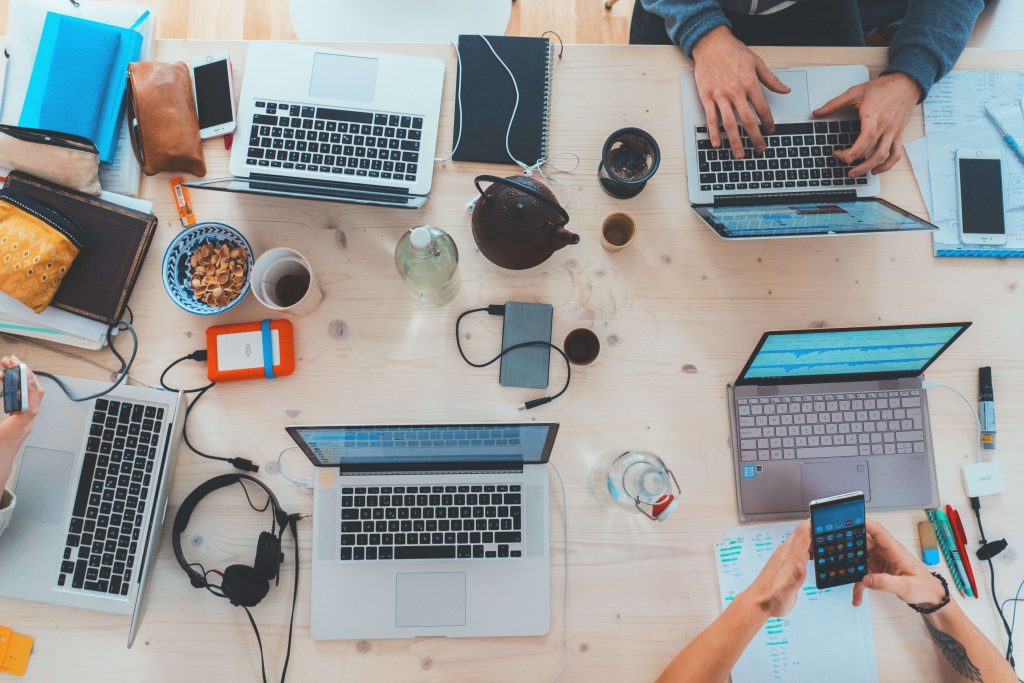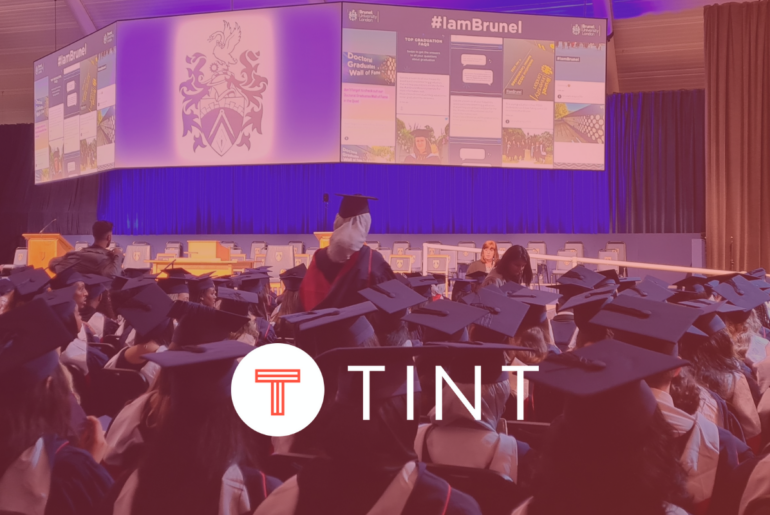Major special events drive engagement on social media. Attendees, vendors, sponsors, and other participants are almost single-mindedly focused on the event. They’re taking photos, sharing content, and connecting with brands in ways outside the norm of standard marketing activation. To maximize the reach and quality of this engagement, you’ll need the perfect special events social team to connect, respond, and participate in the conversation.
This guide is created with “events of scale” (15,000 attendees+) in mind. Many of the best practices translate to events of all sizes. Regardless of the size of your activation, having a special events social team (even if that is not a staffer’s/volunteer’s full-time role) is still incredibly important.

1. Assemble The Team
It isn’t uncommon to have a single staffer “own” social media throughout the year. In many instances, social is the partial responsibility of a mixed team of marketing and communications professionals. During a major special event, it is best to define roles and clearly mark out duties. There can be a lot of functional overlap, but we recommend identifying these five roles on your special events social team.
The Triage Person
Triage comes to us from the field of medicine. It is the practice of assigning priority when dealing with large numbers of patients. The triage person should identify the type of incoming social interaction and flag anything that requires immediate attention. Your triage person should be looking for the following:
- Customer complaints or issues
- Problematic content or behavior
- Outside brands or organizations trying to steal engagement
- Misinformation
The triage person works beyond the social team. They should have processes in place to alert other teams or departments to issues identified through social media. For example, if a featured speaker mentions on Twitter that they’re unable to attend, the triage person should ensure that the programming team is aware of the cancellation.
The triage person should also be responsible for logging complaints or issues to present as part of the post-event debrief.
The Q&A Person
People love to ask questions through social media. There can be logistical questions like directions to the venue, the location of registration, and how to get to panel rooms. There can be destination questions like food and lodging recommendations. There can also be programming questions like panel times and speaker sessions. The Q&A person should be equipped with all the information necessary to become a human FAQ sheet. This person, or persons, should be ready to turn around information quickly. A Search Engine Watch study found that more than half of your attendees will expect a response within an hour.
The Content Person
In a perfect world, all of your content will be scheduled and prepared before the event. The reality is that there will always need to be content created on the fly. Speakers or sessions will cancel. There may be room or venue changes because of rain. You might need to make a last-minute appeal to get people to buy merchandise or participate in the charity auction.
The Content Person should also be equipped with the tools necessary to get their job done. These can be basic assets like logos, frames, and templates in a variety of sizes.
The Community Manager
Many events, particularly recurring events, have a strong community behind them. Your community manager should be monitoring any significant community channel for chatter.
Channels Include:
- Facebook Groups
- Sub-Reddits
- LinkedIn Groups
- Forums or BBS
- Membership Sites
- Other relevant community sites
They should alert the Triage person of anything that may require cross-department action. They should also coordinate efforts with content and Q&A to ensure that any “off-main” conversations are still having information disseminated to them.
Pay special attention should be paid to the number of channels being served. Once you start engaging your audience on a specific platform, they will expect that platform to remain actionable throughout the year. Don’t open a can of worms if you can avoid it!
The Hotline Bling
During an event, particularly those that occur on a weekend or holiday, people will still expect an organization to be responsive to inquiries. This person is the catch-all for all social adjacent communications. This is especially important if you don’t have a team that will remain at the home office to support the event from afar.
The Hotline Bling should have a variety of messages forwarded:
- Voicemails to the front desk or main line of the organization
- Emails from general accounts like info@ or hello@
- Direct Messages from sites like Facebook, Instagram, and Twitter
This person will either be extremely bored or completely inundated with messages. Regardless, it is still an important role to assign. If people are struggling to find information on a site, they will often reach out through traditional channels like phone and email. Don’t lose ticket sales or attendee clout because the phone or email was left unattended.
Decide On Your Tools
The perfect special events social team needs to have the right tools. Most social media managers have a digital utility belt of tools and toys that support their efforts. Use a tool, or tools, that you’re comfortable with for the best results. There are many social media management tools out there, but when starting from scratch, you’re looking for three specific functionalities:
- Social Listening
- Social Posting
- Content Creation
Social Listening
Social Media is all about the conversation. While it is great to monitor chatter that tags your brand’s accounts, it is also important to look for engagement beyond the central feed. A good social listening tool should be able to pick up mentions, hashtags, and keywords. Ideally, this tool would operate across multiple platforms in a centralized interface.
Social Posting
Social Media is a full-contact sport. Listening is not enough. You should be engaging at every opportunity. The more you engage, the more the audience engages. Reply, retweet, and tag as much as possible and/or viable.
Content Creation
Visual content, like photos and videos, not only drives engagement but also supports attendees’ memory. Information paired with a relevant piece of visual content increases information retention from 10% to 65%.
Your special events social team should be outfitted with a tool that helps them create interesting visuals. Adobe Creative Cloud is the industry benchmark for creativity tools but requires skilled operators to use them. Open-source tools like GIMP and Inkscape are great alternatives for the budget-conscious marketer. Online tools like Canva and RelayThat are powerful SaaS products with intuitive designs, but they may not be appropriate if you need to do some heavy lifting or if your venue has internet connectivity issues.
Looking for a tool that does all of it? We’re fans of Hootsuite’s all-in-one listening, posting, and content platform.
Not sure what other tools you’ll need? We’ve rounded up 11 mobile apps event marketers can’t live without to get you started.
Create Assets Ahead of Time
The best practice is to always create a library of event assets ahead of time. This will save your special events social team from having to spin up graphics when they’re in the middle of a show. It’ll also ensure a consistent quality of assets.
Each special event will be different, but the basic elements of the asset library are:
- Logo and Logo Variants
- Don’t make your team hunt for logos in various colors, sizes, layouts, and formats.
- Frames and photo overlays
- Venue and area maps
- Including layouts of rooms like breakout spaces or exhibitor halls
- Photos of speakers, presenters, performers, or other special guests
- Programming schedules
Pre-Plan your responses
A special event social team should prepare as much as possible. Ideally, the website and social strategy leading up to the event will preempt questions, but attendees always ask more. Preparing canned responses that any member of the team can use will improve the efficiency of the team. They’re also instrumental in ensuring the Q&A person can do their job effectively.
Responses to prepare in advance:
- Questions about registration times, session times, exhibitor times, etc.
- Hospitality questions about hotels, restaurants, and attendee amenities.
- Transportation questions about shuttles, taxis, parking, rideshares, and micro-mobility.
- Anticipated complaints, e.g., registration wait times, parking challenges, and weather.
Have a UGC Strategy
User- or attendee-generated content is a powerful tool in the special event social media staffer’s toolkit. Attendees are everywhere. Even if your event has the luxury of hiring a hoard of photographers, you’ll still miss moments that attendees will capture. There are a variety of legalities around reposting content on Instagram. Having a strategy to properly obtain rights to attendee content on social media will save you from an extended legal battle over intellectual property on the back end.
Having a fully fleshed-out UGC strategy will ensure that your event’s reach, engagement, and excitement will transcend the activation and continue throughout the year.
You’ve built your event. You’ve assembled your perfect special events social team. Now ensure that your attendees and stakeholders can see the action. TINT powers beautiful, engaging social walls that aggregate content from across platforms. Use existing projections, screens, and displays to add an interactive element. Curate content with our mobile app to ensure that only the best photos make the screen. Drive participation with exciting social tools like contests, sweepstakes, countdown timers, and hashtag wars. Chat with one of our event social specialists and TINT up your event.



